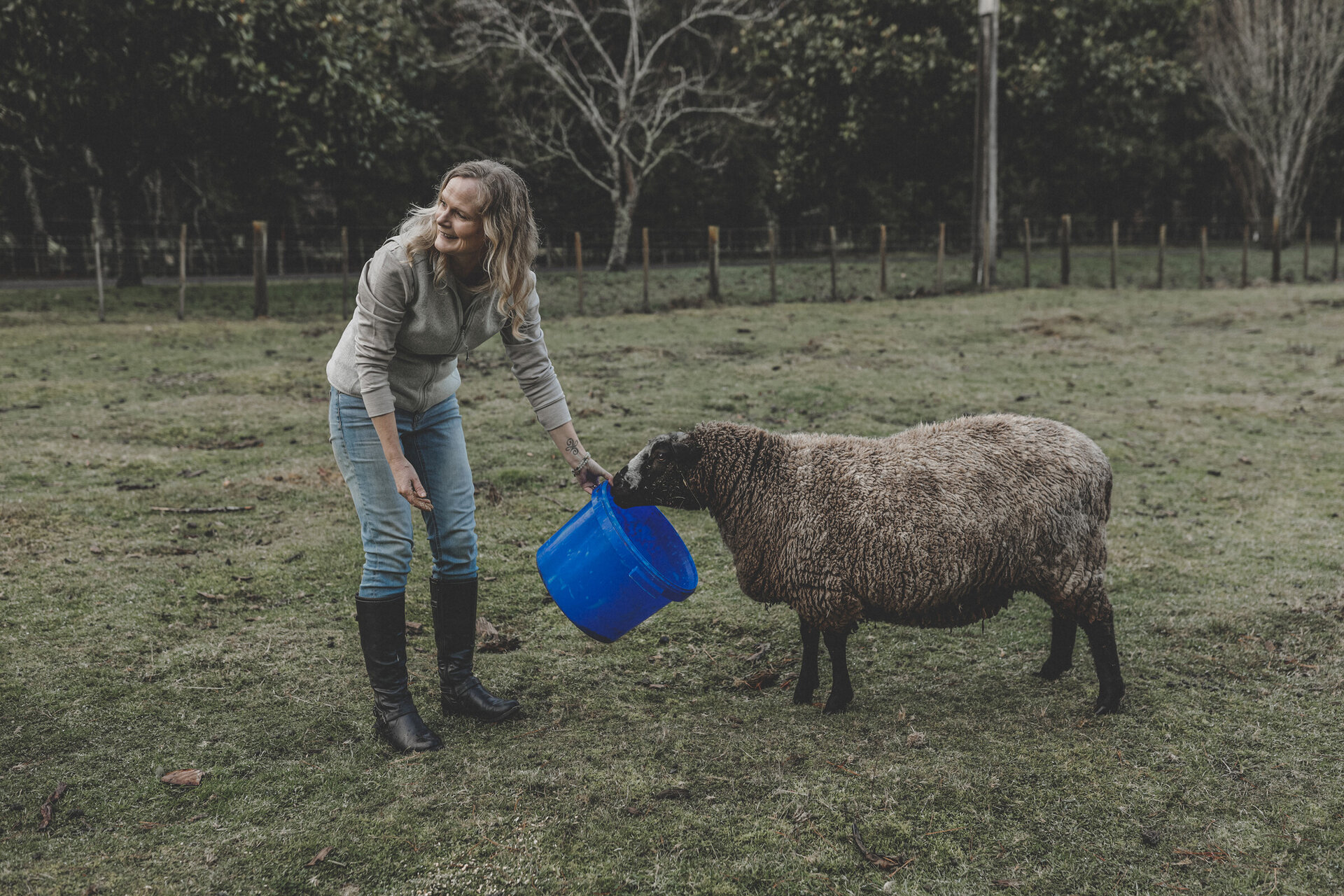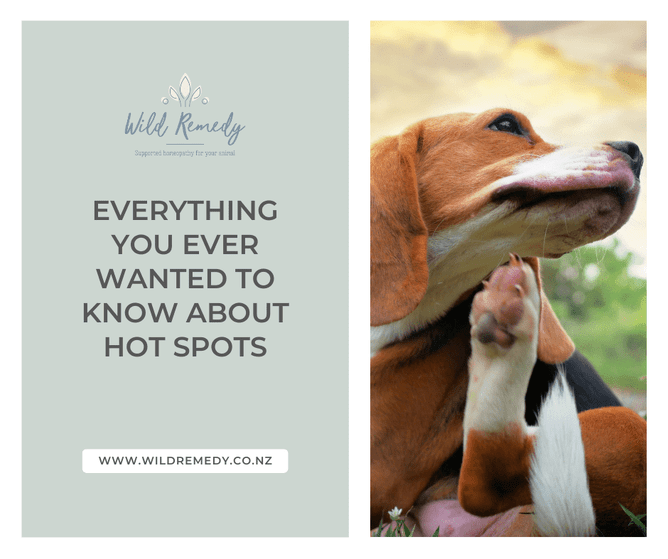Everything you ever wanted to know about Hot Spots!
Spring is usually the time of year that I start seeing dogs coming through the clinic with hot spots (also known as acute moist dermatitis).
Although they can get them any time of the year, they tend to rear their ugly heads in the warm and humid weather.
Hot spots in dogs are common. They usually start out as a small red area somewhere on the body that can easily go undetected until they grow, grow and keep on growing. All of a sudden you have a hot spot mess on your hands.
What are hot spots?
Hot spots are usually caused by the dog itching so intensely that it creates an open wound. There could be several reasons as to why your fur-baby is itching such as, environmental allergies, food allergies, fleas etc.
I tend to see hot spots occurring after an insect bite such as a flea or a tick bite. They are also quite common in dog breeds that tend to swim a lot, their moist fur can become irritating, so they lick, bite and scratch the area which in turn causes the open wound/hot spot.
What do they look like?
The area tends to look red and painful. You may also notice that the affected area is also raised. They can pop up anywhere on the body, but usually you will see them on the face, neck, limbs, and hips as these are the areas that the dog is easily able to scratch and gnaw.
They can vary in size and shape, but they will look similar. Some hot spots will be quite dry with the skin looking red and raw (like a graze) however some hot spots will leak pus and be quite moist.
Hot spots are painful and can be itchy. This causes your fur-baby to itch, lick and scratch even more, which causes more damage to the skin and surrounding area.
What do I do if I find a hot spot?
Inspect the area thoroughly as you may find other areas where potential hotspots may be forming.
If you see your fur-baby scratching, nibbling or intensely focused on one area, have a really good look in and around this area.
Check your fur-baby for fleas or any other insect bites. Rule these out first!
Dogs can also over-lick areas due to pain, anxiety and other injuries as well, so it is best to rule out any deeper conditions.
General hot spot tips
Clip away the fur around the hot spot. This helps stop the fur sticking to the area. It also helps keep the area as dry as possible.
Ensure the area is kept clean. I tend to use Hypercal tincture diluted to keep the area clean. Hypercal also helps reduce any infection. It is important to keep the area clean, this includes cleaning any pus or crusts that build-up (this stops bacteria from building up).
Let the area dry out. Don’t cover it!
Try and keep your fur-baby from licking/itching the area. I know that some guardians resort to soft e-collars so that their fur-baby doesn’t irritate and cause the wound from getting worse.
How can homeopathic remedies help in acute hot spots?
As with any condition, there are a lot of homeopathic remedies that can support your fur-baby with hot spots. As always, it depends on how the hot spots are presenting and also how your fur-baby is reacting to them.
In the initial stages I tend to start with the below remedies:
Arnica or Belladonna 200c. If the area is very red and you can feel the heat radiating off it, I tend to use Belladonna rather than Arnica.
Hypericum 200c. This remedy will help with the pain and stinging that the hot spot is causing. It can with some dogs also help reduce their need to itch and lick the area.
Hepar sulf 200c. This remedy is great to help support any infection and pain. Hepar is typically your go to remedy with any wounds that have pus, moist areas.
Typically, I don't tend to class any skin symptom as an acute as there is always an underlying condition when it comes to skin.
In my experience if your fur-baby has acquired a hot spot then more often than not they will return. I have found that constitutional work alongside other homeopathic remedies tend to be best place practice when dealing with hot spots.
How do I know if the remedies are working?
Hot spots can take a while to heal. Ideally you want to see the redness and irritation (e.g. licking/itching) reduce in intensity. I would then expect to see the area dry out, become less moist and reduced pus. The area should also start to get smaller. Over time I would expect this healing process to continue.
What do I do about recurring hot spots?
If your fur-baby is experiencing recurring hot spots, then this indicates that there is an underlying issue that needs to be identified and addressed. If self-trauma is involved, you really need to get to the bottom of it. Do they need more exercise, are they bored etc.
In chronic cases such as this, I would work closely with your animal homeopath so that together you can put a homeopathic treatment plan in place.



